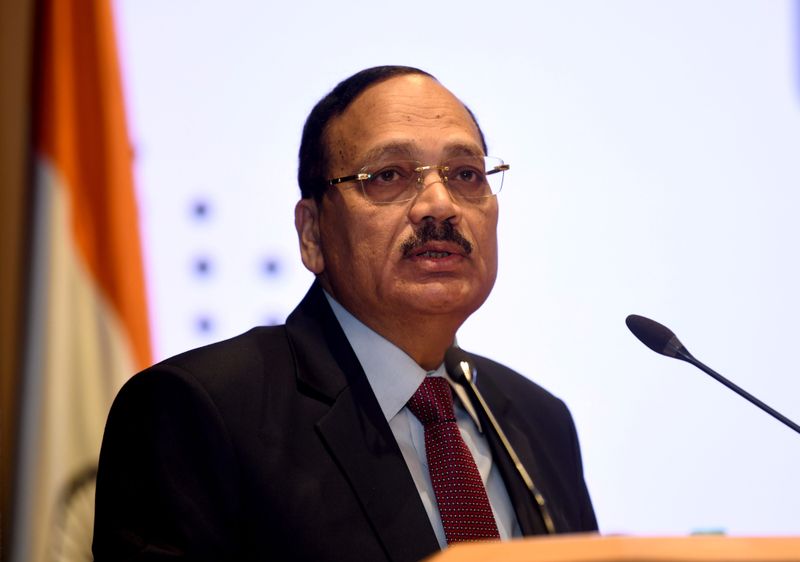Copyright OilPrice

The global hydrogen industry came into view, specifically from importing countries’ perspective, at European Hydrogen Week earlier this month in Brussels. There was a palpable sense of frustration with what many consider an overbearing regulatory framework causing delays. But also a sense of inevitability, with hydrogen mandates in place and pipeline construction now underway. Europe is set to be the world’s largest demand center for low-carbon hydrogen. There was also a sense of determination in the face of a growing number of project cancelations. “The tourists are gone,” said Jorgo Chatzimarkakis, CEO, Hydrogen Europe, an industry group based in Brussels. As weaker projects have fallen by the wayside, he emphasized the need for realism with policies such as mandatory minimum offtake requirements for large industries. Hydrogen, he said, is now at a crossroads and there is a need to relax regulations to allow the clean hydrogen market to take shape. Projects and progress Progress on a few big projects was highlighted, such as the recent offtake agreement between the German energy company RWE AG and the French oil major TotalEnergies. Some 30,000 metric tons green hydrogen, produced at RWE's 300-megawatt electrolysis plant in Lingen, will move annually by pipeline 600km to Total’s refinery in Saxony-Anhalt beginning in 2030. Progress was also reported at Port of Rotterdam, where Shell is building electrolyzer capacity of 200 MW to produce some 22,000 metric tons green hydrogen annually. This will move from the production site on Maasvlakte about 30km via new pipeline to the Shell Energy and Chemicals Park in Rotterdam. Related: Trump Hints China Could Resume Buying U.S. Energy Ivana Jemelkova, CEO, Hydrogen Council, a CEO-led industry initiative, presented key findings from the organization’s Global Hydrogen Compass report, co-authored with McKinsey & Company. According to the report, low carbon hydrogen has surpassed $110 bn in committed capital; it has scaled by a factor of 10 in the past five years. Some 500 projects around the world have reached FID, are in construction or operation. The project pipeline could support 9-14 mtpa of clean hydrogen capacity by 2030. China leads the way $33 billion in investment, followed by North America with $23 billion, and Europe with $19 billion. She hailed “an industry in the process of building up,” and referred to survey data showing 97 percent of CEOs believe hydrogen is a key solution for lowering carbon emissions in the ‘hard-to-abate’ industry sectors. Rules reaction High level representatives from ‘partner countries’ Oman and India presented their countries’ impressive programs for green hydrogen production, leveraging domestic investment and markets to build eventual export industries. However they said bluntly that it is impossible to comply with the current regulations coming from Brussels and EU member states and they asked for clarity. A central issue concerns the source of electricity to power electrolysis in the production of carbon-free or ‘green’ hydrogen. The EU has issued what industry advocates believe to be overly stringent rules for what counts as a ‘renewable fuel of nonbiological origin’ (RFNBO). The rules fall under the EU’s revised Renewable Energy Directive (RED III) and subsequent technical directives. The European goal in this directive is to have 42 percent of hydrogen used in industry to be RFNBO by 2030, increasing to 60 percent by 2035. The rules concern ‘additionality’, meaning the electrolysis that produces hydrogen is powered with new renewable electricity (not diverted from existing capacity). They concern the temporal correlation of the electricity and hydrogen production (within one hour beginning 2028), and geographical correlation to ensure the hydrogen and renewable energy are produced in the same region. These rules apply to hydrogen produced in Europe and overseas for export to Europe. Many in the industry believe the rules are not feasible as they artificially increase the production cost of clean hydrogen. They want to delay the additionality and time correlation requirements in order to help producers get to workable business models. Stringency at EU level is matched with uncertainty of what regulations will be among EU member states. While the EU has delivered the RED III directives setting out the RFNBO requirements, the member states ensure compliance through their own incentives, infrastructure, and regulatory frameworks. They oversee certification of green hydrogen for reporting to Brussels. This process has been slow, causing frustration. “Industry needs to know what to plan for,” said Werner Ponikwar, CEO, thyssenkrupp nucera, a major manufacturer of electrolysis equipment. “What we need from Brussels is a clear regulatory environment that is enabling.” His sentiment was echoed by many industry executives attending the week-long conclave. Building a backbone With RED III the EU has introduced binding quotas and mandates for renewable hydrogen, specifically in the form of RFNBO. The overall 42 percent mandate for industry must be incorporated into member states’ energy and climate plans. There are also quotas for the transport and aviation sectors, creating demand for hydrogen, hydrogen derivatives and synthetic fuels for which hydrogen is a feedstock. In the transport sector, the member states must reduce greenhouse gas intensity in transport fuels, or ensure a percentage (29%) of final energy in the sector comes from renewables. There are sub-targets for advanced biofuels, hydrogen and synthetic fuels. For aviation there must be a minimum share of sustainable aviation fuels rising to 34 percent by 2040 with subquotas for hydrogen-derived synthetic fuels. While the maritime sector is not given direct mandates, it is placed under the EU’s Emissions Trading System. This imminent demand is provoking the development of mid-stream infrastructure. The EU has identified five major hydrogen supply corridors to be built with new pipeline and repurposed natural gas pipeline. These should eventually enable a hydrogen market to arise as a commodity market. Germany is at the center of the planned pipeline corridors reaching across Europe. The 600km pipeline for the RWE – TotalEnergies project, part of Germany’s core network being built by utilities and industries, is part of the larger North Sea Corridor. This is now under construction as one of the first links of the country’s new hydrogen network open to all industries. A key connector will link it to the Dutch network extending from Rotterdam. When stars align Martin Tengler, Head of Hydrogen Research, Bloomberg NEF, offered insights on how hydrogen can scale up. Drawing upon a database of projects with binding offtake agreements, Bloomberg forecasts that hydrogen supply reaches 5.5 million metric tons in 2030, just 20 percent of national targets. Tengler described four policy ‘stars’ to get the market moving. Among these is funding, with the $270 bn of subsidies for hydrogen worldwide needing to be more directed toward demand creation. Demand incentives, such as quotas and contracts for difference schemes, must be implemented more vigorously. The incentivizing of some 1.7 Mt of green (or blue) hydrogen by the EU, Japan, Korea, and other governments, is not occurring quickly enough. Carbon prices, which are vital for clean hydrogen to rival the cost of ‘gray’ hydrogen in Europe, are too low in the sectors relevant to hydrogen. This will change with implementation of the carbon border adjustment mechanism (CBAM) and the phase out of free allowances, but it will not significantly change cost factors until the 2030s. Finally, midstream, in the form of pipelines and ports to store and move hydrogen, is a critical vector requiring ongoing government support. Tengler showed how the four stars aligned in the case of the RWE – TotalEnergies contract. The deal includes a large subsidy from the German government (euro 690 mn) to RWE, while Total is facing RED III quotas and a carbon price for oil refiners in Germany. These factors likely increased the company’s willingness to pay a price well above the cost to produce ‘gray’ hydrogen. Finally, the German government’s support for pipeline construction was an important enabler of the arrangement. Resilience a demand driver Much discussion centered on hydrogen and economic resilience. While this was ostensibly about rising energy demand for data centers, the idea of hydrogen took on an added dimension in a new era of insecurity and geopolitical tumult. Low-carbon hydrogen, produced in Europe and stored in tanks and pipelines, appeared as an important fuel for EU security. This became an argument for governments to continue imposing quotas, shouldering the cost of infrastructure and supporting the nascent fuel. Resilience may hold the potential to become a demand driver, supplementing the subsidies, mandates and quotas already in place. This could further the great European goal of making low-carbon hydrogen a traded commodity across the continent, made competitive by the de-risking that comes with markets. By Alan Mammoser for Oilprice.com More Top Reads From Oilprice.com Trump and Xi Pledge Cooperation on Ukraine, Trade, and Minerals TotalEnergies Q3 Earnings Hold Steady Despite Oil Price Dip U.S. Sanctions Force Lukoil to Divest Global Holdings



